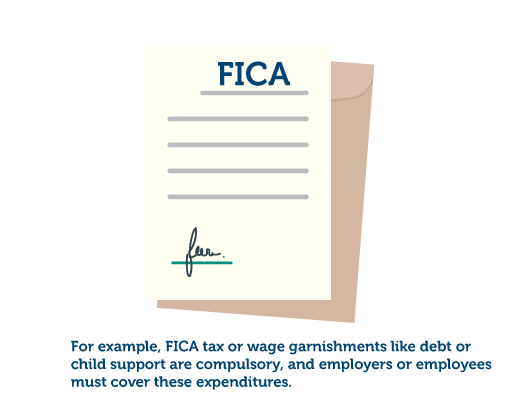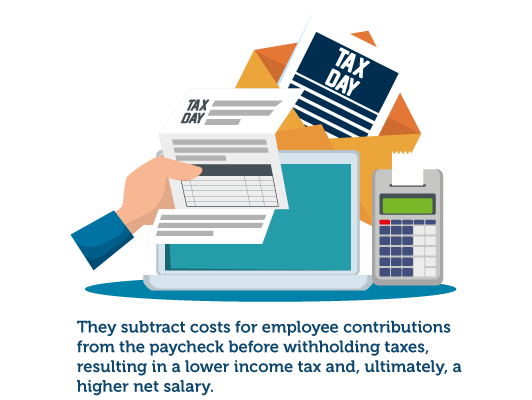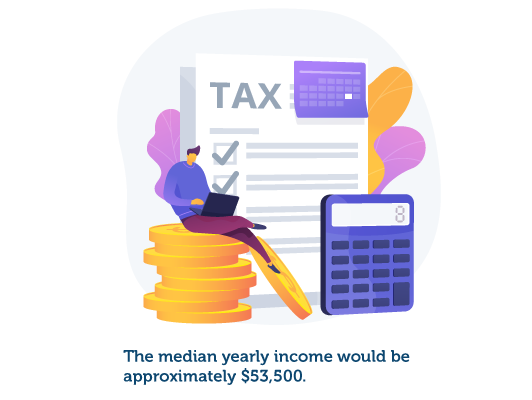
What is a Bi-Weekly Payroll?
Nearly half of Americans live paycheck to paycheck. Could switching to bi-weekly pay be the financial help your employees need?

From pre-tax deductions and benefits to mandatory taxation, understanding payroll features and what they mean is essential for employees and employers.
Workers should know what they’re giving and getting with every paycheck.
At the same time, it’s the leadership’s responsibility to keep an eye on changing policies that could affect their employees, especially regarding payroll tax deductions.
There are several different types of pre and post-tax deductions.
They come with their own set of rules, limits, or regulations, and comprehending them can make a difference in a person’s net salary.

Pretax deductions refer to the portion of an employee’s income that employers withhold to cover taxes, insurance, and various benefits. These deductions are subtracted from the employee’s gross pay before taxes are calculated, resulting in a reduced taxable income and a lower tax liability.
While some payroll deductions are mandatory, others are voluntary.
Pre-tax deductions provide the advantage of lowering taxable income, benefiting both employees and employers. They enable employees to access benefits and contributions at a more affordable cost compared to using after-tax dollars.
It’s important to note that certain pre-tax deductions have annual contribution limits set for employees and employers.
The answer to what pre-tax deductions and contributions are is relatively straightforward. They are money taken from a person’s paycheck before the IRS taxes the income.
But their scope, purpose, and limitations are much more complex.
Companies can decide what type of benefits they offer their employees, whether pension plans or medical insurance. But the pre-tax contribution they make towards that plan counts as a tax deduction and can reduce the tax burden for that tax year.
Payroll deductions come in many forms, mandatory and voluntary, pre or post-tax.
For example, FICA tax or wage garnishments like debt or child support are compulsory, and employers or employees must cover these expenditures.
But other non-mandatory deductions are benefits like health and disability insurance, retirement savings, or other work-related payments. These largely depend on the employer and what it offers to its workers.
We can further separate these deductions into pre-tax and post-tax.
Retirement plans like 401(k)s, medical and dental benefits, and group term life insurance are what qualify for pre-tax deductions.

There are many different types of pre-tax deductions and contributions. However, it’s a fluid list that changes rules and regulations annually, so it’s important to always check for updates.
At the moment, the pre-tax deduction and contribution list consist of:
The way pre-tax deductions affect take-home pay is beneficial for employees and employers.
Pre-tax deductions increase the total sum of the full take-home pay.
They subtract costs for employee contributions from the paycheck before withholding taxes, resulting in a lower income tax and, ultimately, a higher net salary.

One of the benefits of pre-tax deductions is that they are most likely to reduce an employee’s taxable wages.
In other words, the money employers take away from the payroll to cover different employee benefits before taxes reduce the total amount of federal, state, and local taxes, or FUTA, FICA, and SUI.
Although not all deductions are tax-free, pre-tax contributions can save employees considerably more money compared to what they would end up paying with post-tax benefits.
That’s because post-tax cuts have no impact on taxable income.
So, the more money amasses on pre-tax deductions, the fewer workers owe to the government on taxes, leaving them with more spending money. However, it’s worth noting that the rates and regulations change yearly, usually adjusting to the fluctuating cost of living and inflation levels.
It’s hard to give a precise number of the average annual salary for workers in the U.S. However, if we take some of the latest data from the U.S. Bureau of Labor Statistics, the median yearly income would be approximately $53,500.
So, if employers paid an employee bi-weekly, without pre-taxes and deductions, the wage would be $2,229. Of these, 18.63% go to federal, state, and local taxes, or $415. For FICA and State Insurance Taxes, employers pay 7.83% or $175.
With, for example, pre-tax deductions of five percent towards 401(k) savings would mean an additional cut of $111. Without further pre or post-tax deductions, the estimated semi-monthly take-home pay would be $1,528.
That is just a rough estimate of how tax deductions work.
However, these numbers vary based on many factors, including different types of tax deductions like health insurance, benefit plans, and even commuter benefits.
There are many free tools for employees to calculate their tax expenses and pre and post-tax deductions.
For employers, payroll outsourcing can be a great way to track and manage taxes and other expenses. In contrast, free payroll systems are an excellent addition for HR teams in smaller businesses or self-employed people.

Tax planning and processing can be a lot less challenging with the correct information. Using payroll software to keep things in check can ensure business compliance with the latest taxing regulations.
At the same time, when employees know their options and employers work in their staff’s best interest to keep them updated, pre-tax deductions can be a great work perk. They are an excellent way to get many company benefits and insurance while saving money.
Browse our curated list of vendors to find the best solution for your needs.
Subscribe to our newsletter for the latest trends, expert tips, and workplace insights!

Nearly half of Americans live paycheck to paycheck. Could switching to bi-weekly pay be the financial help your employees need?

Find out why biweekly payments are currently the most popular option in the US.

Learn how pre-tax deductions can be a great work perk to get many company benefits and insurance while saving money.

Explore the concept of imputed income, its tax implications, and the importance of accurate reporting to understand how employers handle imputed income on pay stubs and tax forms.
Used by most of the top employee benefits consultants in the US, Shortlister is where you can find, research and select HR and benefits vendors for your clients.
Shortlister helps you reach your ideal prospects. Claim your free account to control your message and receive employer, consultant and health plan leads.